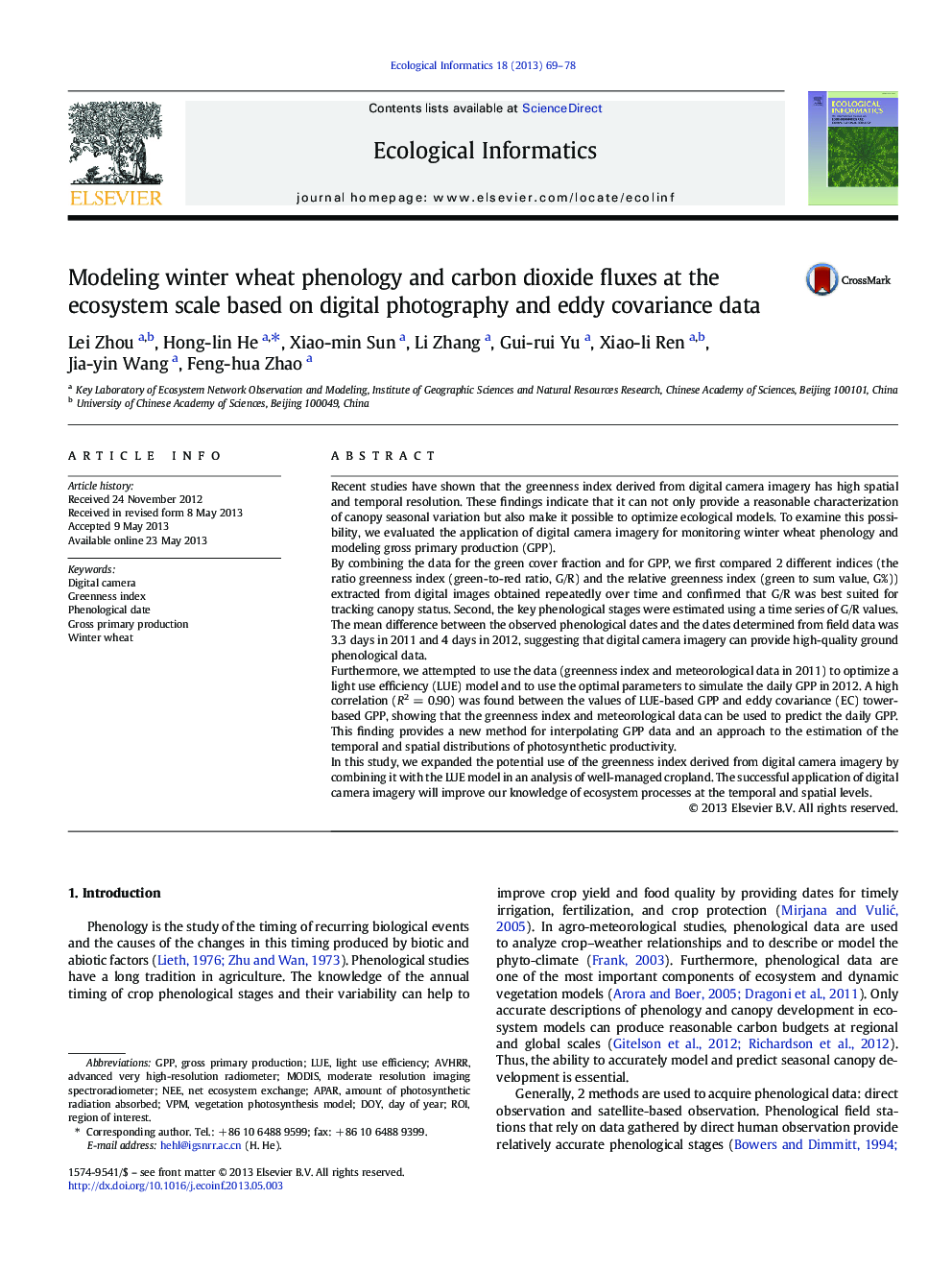| Article ID | Journal | Published Year | Pages | File Type |
|---|---|---|---|---|
| 4374931 | Ecological Informatics | 2013 | 10 Pages |
•We compared 2 different indices (G/R and G%) and confirmed that G/R was best suited for tracking canopy status.•G/R provides high-quality key phenological stages data in well-managed cropland.•G/R could reflect the winter wheat physiological states and model daily GPP.•There are several limitations and uncertainties to improve the accuracy of phonological monitoring and daily GPP modeling.
Recent studies have shown that the greenness index derived from digital camera imagery has high spatial and temporal resolution. These findings indicate that it can not only provide a reasonable characterization of canopy seasonal variation but also make it possible to optimize ecological models. To examine this possibility, we evaluated the application of digital camera imagery for monitoring winter wheat phenology and modeling gross primary production (GPP).By combining the data for the green cover fraction and for GPP, we first compared 2 different indices (the ratio greenness index (green-to-red ratio, G/R) and the relative greenness index (green to sum value, G%)) extracted from digital images obtained repeatedly over time and confirmed that G/R was best suited for tracking canopy status. Second, the key phenological stages were estimated using a time series of G/R values. The mean difference between the observed phenological dates and the dates determined from field data was 3.3 days in 2011 and 4 days in 2012, suggesting that digital camera imagery can provide high-quality ground phenological data.Furthermore, we attempted to use the data (greenness index and meteorological data in 2011) to optimize a light use efficiency (LUE) model and to use the optimal parameters to simulate the daily GPP in 2012. A high correlation (R2 = 0.90) was found between the values of LUE-based GPP and eddy covariance (EC) tower-based GPP, showing that the greenness index and meteorological data can be used to predict the daily GPP. This finding provides a new method for interpolating GPP data and an approach to the estimation of the temporal and spatial distributions of photosynthetic productivity.In this study, we expanded the potential use of the greenness index derived from digital camera imagery by combining it with the LUE model in an analysis of well-managed cropland. The successful application of digital camera imagery will improve our knowledge of ecosystem processes at the temporal and spatial levels.
